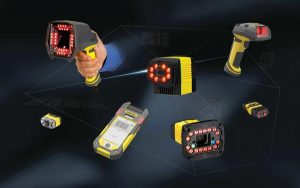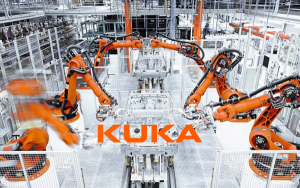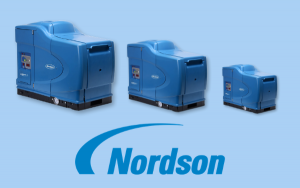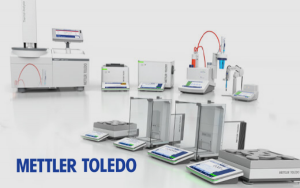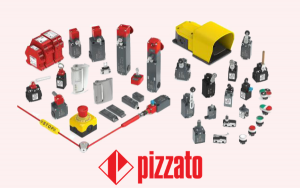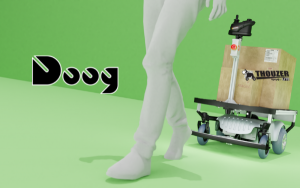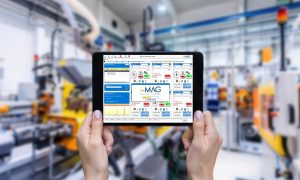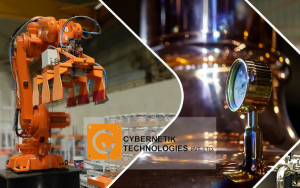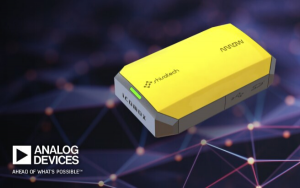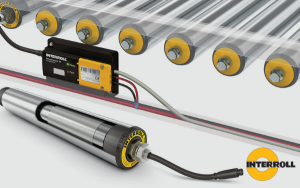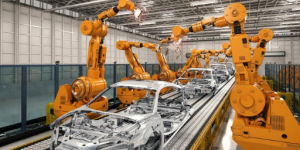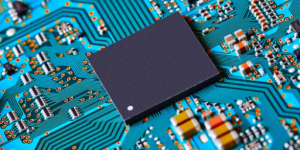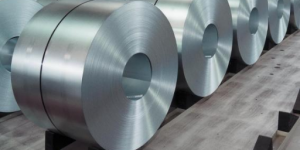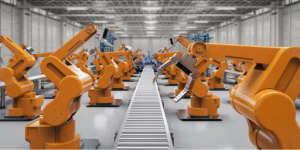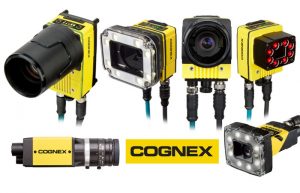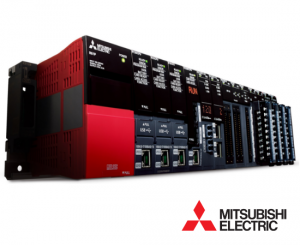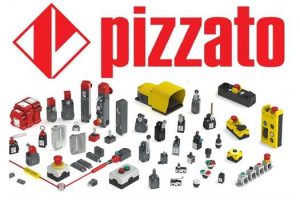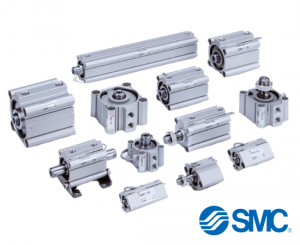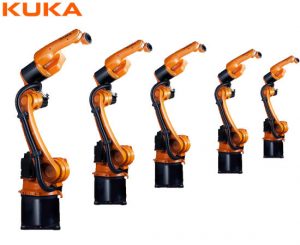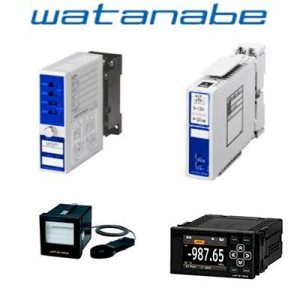The industrial revolution 4.0 broke out, changing many production methods. Accordingly, the introduction of production robots is not too strange, because of the outstanding advantages brought to business owners, especially welding robots in mechanical processing workshops. So what is Robot Welding? In which industry is the welding robot applied? What are the benefits to the business?
I. Understanding Robot Welding:
Welding robot is a pre-programmed robot that helps the owner to completely automate the mechanical welding process. Depending on the purpose of use, the market has produced many different types of mechanical welding robots in terms of welding heads such as welding robots, wire welding, spot welding or laser welding.
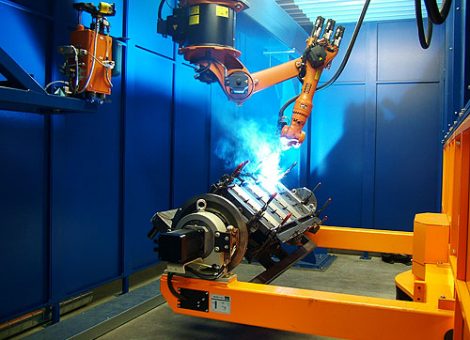
Welding robots are applied to automated production lines that require expertise and complexity such as the production of cars, motorcycles, pipes, racks,…, welding robots will help a lot and provide superior efficiency compared to conventional manual labor.
For nearly 50 years, the auto industry has been constantly innovating to achieve the look it is today. Car manufacturers such as Ford, Mercedes, Toyota, Honda, Nissan, etc. all apply automatic production and assembly lines, of which welding robots account for 40%
II. Basic structure of mechanical welding robot
1. Arc Welding Robot
Welding robots are mainly in the form of articulated or swivel arms. The Cartesian Axis robot is used only for very large or very small robots. The robot arm is used a lot because it allows the welding gun to move like a human manipulated. The gun angle and travel angle can be changed to weld in any position, especially in hard to reach places. The robotic arm is also the lightest and has the greatest reach. Usually welding robots have 5-6 free, programmable axes. Robot arms are available from many suppliers such as ABB, FANUC, PANASONIC, KUKA, MOTOMAN
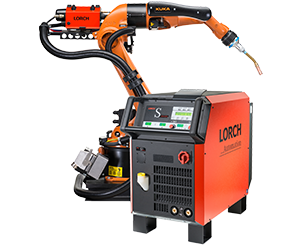
2. Solder source
The welding source must provide a controllable current at a voltage suitable for the welding process.
Automatic arc welding machines require more complex power than semi-automatic welding machines. The automatic welding machine needs to be connected to the power source to control the welding source for optimal performance.
3. Arc welding gun
The welding gun is used to contact the electrode to the weld, transmit welding current to the electrode and create a protective environment around the weld. There are different types of welding guns, depending on the welding process, welding current, electrode size and weld protection material.
The welding gun can be cooled by circulating water or air. The welding guns can be straight or curved. Curved welding gun for easier access to the weld.
The main function of the welding gun is to transmit electric current to the electrode. For welding using a molten electrode, the welding current is transferred to the electrode as it passes through the gun.
The second function of the welding gun is to supply gas to protect the welding area. Arc welding uses an active gas such as carbon dioxide or an inert gas mixture, usually argon and CO2.
The welding gun is attached to the robot body. Usually equipped with an anti-collision clutch, preventing the electrode from sticking or bumping during installation and starting.
4. Wire feeder
Wire feeder is used to add fill metal during automatic welding. This allows flexibility in setting various feed rates to suit the specific requirements of each line. Normally, the wire feeder is mounted on the robot arm, independent of the welding source. With automatic welding, a control interface is required between the robot controller, power supply and wire feeder. The wire feed system must be suitable for the welding process and the type of power source used.
5. Positioning and fixing the soldering iron
To join welds, each weld must be precisely aligned and securely fixed in place during welding. One important thing is how to design a bracket to hold the welds in the proper position. This part must be quick and easy to operate, hold the welds firmly until they stick together, and must allow the welding gun to freely approach the weld.
Positioners can be designed as in manual welding, or specifically to increase the flexibility and range of automated welding systems. Accuracy should also be higher. In addition, the robot positioning controls must be compatible and compliant with the central robot controller to achieve instantaneous coordinated movement of multiple axes during welding.
However, lifting and lowering static parts of a robotic system is time consuming and can be impractical. It is more efficient to have two or more retaining frames on a rotating solder positioner, although the initial cost is higher.
6. Welding gun cleaning kit
To work accurately and reliably, the arc welding gun must be cleaned continuously. The duty cycle is mostly on 100% mode so the cleaning process of the welding gun must also be automated. Solder flakes are sprayed on the tip of the soldering iron. In addition, the cleaning kit can also rub the tip of the solder gun to remove solder flakes and cut the solder wire. The cleaning system shall be automatically activated at the times required by the control system.
7. Centerer
The end-of-hand sensor and the center of gravity alignment process are fundamental to the successful implementation of an automated welding system. The end sensor is used to detect the actual position of the edge of the workpiece relative to the robot frame, thereby calculating the exact center of gravity of the tool relative to the workpiece.
III. Applications of welding robots for mechanical processing

- Outstanding work productivity: Welding robot is 5 times more capable of working than a human. And the Robot is not affected by the harsh working environment.
- Ability to work accurately: due to computer programming, the welding robot’s operations can reach high accuracy.
- Ensure the working environment conforms to occupational safety standards: Factors such as toxic gas, electric shock, working environment at height, unsafe, flammable,… completely do not affect the Robot. .
- Solve problems related to worker’s skill: Welding robot works based on pre-installed programming, businesses do not need to care about the shortage of highly qualified personnel.
- Homogeneous products: With the almost absolute high precision of the welding robot, the series of products produced will have uniform and qualified quality because of the stability of the welding robot in terms of time, speed,…
In Vietnam, Vuletech is one of the companies that undertake the construction of Kuka Robotic solutions. For more detailed information, please contact:
Vu Le Technology Co., Ltd
Address: 27 Xuan Quynh, Gia Hoa Residential Area, Phuoc Long B Ward, District 9, HCMC
Hotline: (028) 3620 8179 / 3620 8176 / 3620 8177
Fax: (028) 3620 8178
Mail: info@vuletech.com





